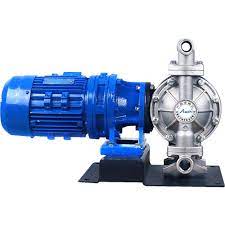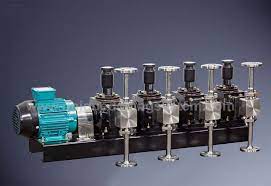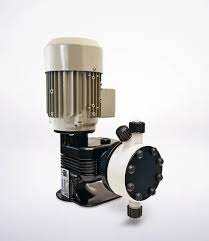Introduction
ASHA TECHNOCRATS
manufacturing various kinds of pumps for swimming pools and other accessories
with authentic raw materials fabricated with innovative techniques. We are
committed to producing a wide range of pool pumps and other accessories using
genuine raw materials made using cutting-edge methods. As one of the top
producers of various types of pool pumps, we have attained an impressive
position.
We provide
cutting-edge goods and technologies for applications such as swimming pools,
heat recovery, chemical dosing pumps, chemical metering pumps, EMEC dosing
pumps, EMEC chemical dosing pumps, and water treatment.
What is an Air
Operated Double Diaphragm Pump?
An Air Operated
Double Diaphragm (AODD) pump is a type of positive displacement pump that uses
compressed air to drive diaphragms back and forth, creating a pumping action
that moves fluids through the pump. The unique feature of AODD pumps lies in
their ability to operate without electricity, making them an ideal solution for
hazardous environments or locations where electrical power is unavailable.
How Do AODD Pumps
Work?
Compressed air
powers the pump, causing the diaphragms to move alternately. This movement
generates a suction, which draws fluid into the pump, and a discharge cycle,
which pushes fluid out. The
double diaphragm mechanism ensures that the pump can handle a wide range of
viscosities, from thin liquids to thicker slurries, with ease and precision.
Key Benefits of Air
Operated Double Diaphragm Pumps
No Electricity
Required
One of the most
significant advantages of AODD pumps is that they are powered by compressed
air, not electricity. This makes them perfect for hazardous environments, such
as chemical plants or explosion-prone areas, where electrical equipment could
pose a safety risk.
Self-Priming
Capability
AODD pumps are
self-priming, meaning they can start pumping even when the pump casing is empty.
This makes them versatile for various applications, including those that
involve fluid transfer from tanks or pits.
Durability and
Reliability
At ASHA
TECHNOCRATS, we manufacture AODD pumps with high-quality materials designed for
heavy-duty applications. Our pumps are built to last and can handle abrasive,
corrosive, or viscous fluids without compromising performance.
Versatility
AODD pumps are
incredibly versatile. They can handle a broad range of fluids, including
chemicals, oils, slurries, and even food-grade liquids. With customizable
materials and designs, they can meet the specific needs of any industry.
Ease of Maintenance
One of the highlights
of AODD pumps is their simplicity in maintenance. With fewer moving parts and
no complex electrical systems, the pumps require minimal maintenance, which
translates to reduced operational costs and increased uptime.
Applications of
AODD Pumps
AODD pumps are
widely used in various sectors due to their unique advantages. Some common
applications include:
Chemical
Processing: Handling aggressive chemicals, acids, and solvents.
Food and Beverage:
Transfer of food products, sauces, and beverages, with a focus on hygiene and
safety.
Pharmaceuticals:
Accurate dosing and pumping of sensitive pharmaceutical liquids.
Mining and
Construction: Transfer of slurries, sludge, and abrasive materials.
Wastewater
Treatment: Pumping of sludge and other wastewater-related materials.
Conclusion
Air Operated Double
Diaphragm pumps from ASHA TECHNOCRATS are designed to meet the demanding
requirements of modern industries. Get in touch with ASHA TECHNOCRATS today to
explore how our AODD pumps can enhance your operations and provide you with a
fluid handling solution that is cost-effective and long-lasting.
Contact Us Today!
For more
information on our Air Operated Double Diaphragm Pumps, feel free to contact us
at ASHA TECHNOCRATS. Our team is ready to assist you with any inquiries,
provide technical support, and guide you in choosing the right pump for your
needs.






